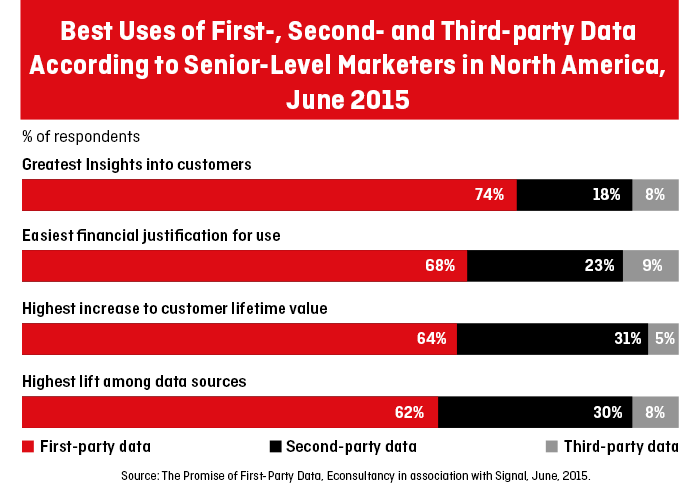First Party Data and Consent Management
How to manage user consent for first party data that is allowed to be used or distributed to third parties.
Data is the essence of mass personalisation and targeted marketing. In the era of the fading out of third party cookies (Google Chrome phasing out third-party cookies in 2022 while Firefox and Safari have already done), first-party data with proper consent is pioneering the new way for marketing.
Marketers, publishers and brands are looking to improve on how they use first-party data, because of the ever evolving global data privacy laws and legislation.
![]()
There are new challenges for adapting to first-party data only in your digital marketing pipeline: how to collect first party data, how to use, how to manage consent etc. The whole digital marketing ecosystem in the privacy age will be redefined.
Secure data, privacy and compliance by obtaining consent then respecting user’s preferences are the foundation of the new digital marketing world.
W
First party data is information that is collected about a user via a company where a user is directly an audience or a customer. The company owns the digital marketing data sources such as websites, mobile apps, CRM, social media etc.
First party data is used to identify consumer preferences, including:
- Demography: age, gender, income, education, geographic location
- Interests, hobbies and passions
- Purchase history and intentions
- Visit and interactions logs
- Etc
First party data is considered more valuable because of the quality of the data, the trust and relationship you have built with the user.
First party data binded with consent which is collected for free can also be segmented and monetised like third party data by using a first party data management platform like PubSurge.
W
Data is important for a business to make better decisions, better marketing, utilise personalised ads and services to increase the chance of a conversion.
There are reasons why first party data is more important in the future:
- Data privacy legislation and technology are making data sharing and selling more difficult, so first-party data is more important.
- The fade out of third party cookies by browsers such as Google, Safari, Firefox. This will be done in one or two years. Third party scripts won't be able to track users across the internet.
- First party data gives more control: easy to collect, easy to erase, easy to keep updated and in control of the user, allowing a company to use data based on consent that can change from time to time.
E
First party data is essentially data that is generated when a user interacts with the assets of your business.
Examples of first party data:
- Data collected in your CRM
- Data and cookies collected in your website
- Data collected with first party data DMP
- Completed surveys
- Customer feedback
- Support tickets
- Emails collected with newsletters
- Social profile of users
- Subscription-based emails
- Products the user looked at
- Articles the user interacted with
- Time spent on websites
H
The normal ways of collecting first party data includes Google Analytics, mobile apps, social media, customer surveys, support tickets and messages, customer service emails, SMS, CRM and point of purchase interactions. You can also collect additional data such as user interactions, gather and manage all first party data with a first party Data Management Platform (DMP) like PubSurge.
H
- Identifying consumer preferences
- First-party data programmatic advertising
- Gain audience insights
- Predict future patterns and user interactions
- Personalise content and advertisements

C
While first party data is the data that you own, second and third party data is what you can buy from another company or exchange the value with another company to benefit both parties through user collected data.
Second and third party data is data from users that you don’t have a direct relationship with. So the trust and data quality is lower.
Some companies or people also refer to first party data as voluntarily given or zero party data.
D
CCPA and GDPR have redefined how a company can receive, store, and distribute customer data. The general rules are keeping the process of using first party data transparent, collect consent for first-party data and allow users to update the data and opt-out if they want.
H
Firstly, you have to provide a solid privacy policy to users and keep the process transparent about how you will use a user's first party data.
Secondly, you must collect explicit consent from users for first party data with a CMP like UniConsent.
Thirdly, provide preference management features to allow users to update and change the data and consent they have given, making it an on-going relationship between the company and the user.
W
Due to privacy laws such as GDPR, CCPA companies need to take the audience’s consent before collecting personal data and respect their choices or allow users to opt out through a clear and easy to understand way.
The General Data Protection Regulation requires companies to collect "Accept Cookies" consent before writing the cookies to the user's browser. This applies to all the non-essential persistent cookies including the first party data and cookies for personalisation.
A
UniConsent consent management platform is a part of Transfon User Experience Platform serve tens of millions of users per day for global marketers and publishers to provide a seamless user experience. Contact us to know more: hello@uniconsent.com
Get started to make your website and application compliant for EU GDPR, US CPRA, CA PIPEDA etc
Sign up